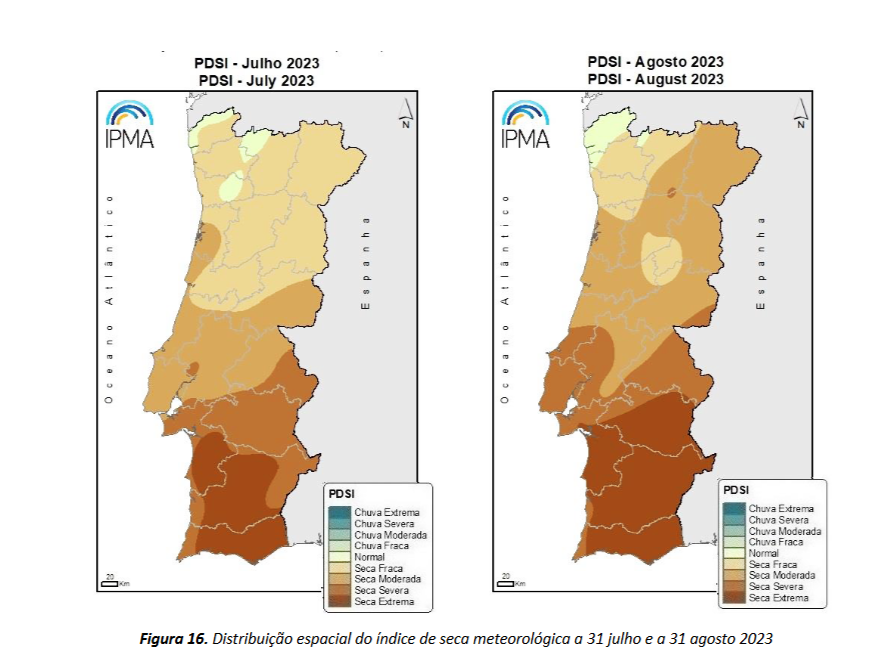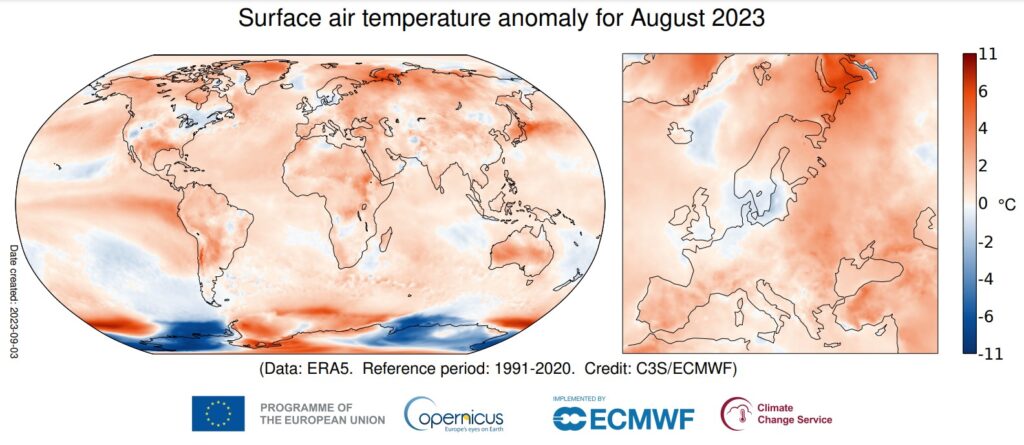The month of August 2023 was the fifth hottest in mainland Portugal since 1931, with two heat waves and an increase in the drought situation reaching 97% of the territory, which is already extreme in almost the entire territory of the Algarve and Baixo Alentejo, except in a strip of Costa Vicentina and Southwest Alentejo, where it remains severe.
According to the climate bulletin from the Portuguese Institute of Sea and Atmosphere (IPMA), released yesterday, Friday, the month of August in mainland Portugal was classified as extremely hot in relation to air temperature and dry in relation to precipitation, with been the fifth warmest since 1931, after 2003, 2018, 1949 and 2010.
According to IPMA, during the month the August maximum temperature was exceeded in 20 stations, the historical maximum was exceeded in seven stations, and there were two heat waves that covered the Tagus Valley regions, interior North and Center and South region.
The bulletin highlights the 6th and 7th, 22nd and 23rd with very high values of maximum and minimum air temperature, with the 22nd and 23rd, respectively, being the fifth and sixth hottest days in the last 15 years in mainland Portugal.
The IPMA also indicates that, during the month of August, there was no precipitation in a large part of the territory, except in the Minho region, particularly on the 18th and 19th, with daily values exceeding 40 millimeters.

The document also highlights the decrease in the percentage of water in the soil throughout the territory, being more significant in the regions of Vale do Tejo, Alentejo and Algarve.
According to IPMA, these regions have percentage values of water in the soil below 10%, and in many places “the water content in the soil is at the level of permanent wilting point”.
The bulletin also highlights that, at the end of August, there was an increase in the intensity of the meteorological drought in almost the entire territory of the continent, highlighting the districts of Setúbal, Évora, Beja and Faro with an increase in the area in extreme drought.
According to the document, on August 31, 97% of the territory was in meteorological drought, of which 46% were in the severe and extreme drought classes.
The IPMA also reports on the meteorological situation at a global level, stating that “the month of August 2023 was the hottest ever recorded and the hottest than all other months, with the exception of July 2023”, with waves of heat in several regions of the Northern Hemisphere, including southern Europe, the southern United States and Japan.
“Air temperatures above the climatological average were observed in most of Europe, with southern Europe experiencing heat waves in Portugal, France and Italy. Milan recorded its hottest average daily temperature since 1763. The heat in southern Europe extended to North Africa/Maghreb, with Morocco recording a temperature above 50.4°C for the first time”, writes IPMA.
The document states that Turkey, Eastern Europe and an area over the Kara Sea also had temperatures well above average, while an area centered on southern Scandinavia, including the Netherlands and the south of the United Kingdom, recorded temperatures close to or below average.
In relation to precipitation in Europe, the IPMA indicates that wetter than average conditions were observed in a large part of Central Europe and Scandinavia, with the occurrence of heavy rains that led to flooding, but, on the other hand, there were drier than average in the Iberian Peninsula, southern France, Iceland and much of Eastern Europe, including the southern Balkans.
The IPMA also highlights the occurrence of forest fires in France, Greece, Italy and Portugal in August.




















Comments